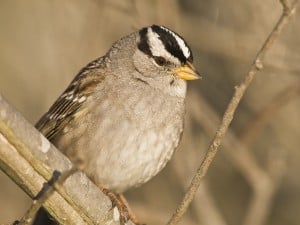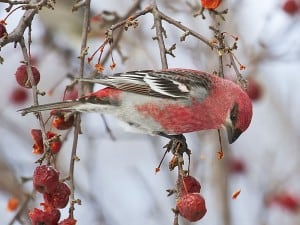Sitting down at the computer this week to write my column was a real pleasure, especially after an absence of 10 months. I used my time away to work on a nature activity guide entitled “The Big Book of Nature Activities: A Year-round Guide to Outdoor Learning”, which should be out next spring. My co-author on the book is Jacob Rodenburg, Executive Director of Camp Kawartha. I would like to thank Martin and Kathy Parker, Rick Stankiewicz, Tim Dyson, Paul Elliott, Jim Schaefer and Lisa Nisbet for having done such an admirable job filling in for me. We are extremely fortunate in the Kawarthas to have so many knowledgeable and committed people when it comes to interpreting the wonder and importance of the natural world.
As I have often done over the years, I have decided this week to present some mileposts of fall’s progression. These are a reminder of what events we can anticipate in the flora and fauna of the Kawarthas over the coming weeks. If the mild weather we are currently experience continues, however, some events may be delayed. We shouldn’t be surprised. Departures from the norm are what we’ve come to expect in a time of climate change.
Early October
· On an average year, fall colours in the Kawarthas reach their height at or about Thanksgiving. As of September 24, the Fall Colour Progression Report (posted on www.ontariotravel.net) was reporting about a 20% colour change for the trees in our area. County Roads 620 and 504 around Chandos Lake east of Apsley make for a great colour drive.
· Sparrow migration takes centre stage this month, making October one of the busiest times of the year for backyard feeders. Scatter millet or finch mix on the ground to attract Dark-eyed Juncos and both White-throated and White-crowned Sparrows.
· As the goldenrods quickly fade away, asters dominate (and conclude!) the year’s wildflower show. The generally white flowers of Heath and Calico asters, along with the purple or mauve blossoms of New England and Heart-leaved asters seem to be everywhere. Go to ontariowildflowers.com for excellent tips on identifying asters.
· Watch and listen for mixed flocks of Golden-crowned and Ruby-crowned kinglets, Brown Creepers, Dark-eyed Juncos, White-throated Sparrows, and Yellow-rumped Warblers. Our local rail-trails are a great place to see these birds. Listen for contact calls and use pishing.
· October is a great time to find salamanders. The Red-backed, which is almost worm-like in appearance, is usually the most common. Both Spotted and Blue-spotted are also present, however. Look carefully under flat rocks, old boards, and logs in damp wooded areas and around cottages.
Mid-October
· Flocks of “Giant” Canada geese (the subspecies that nests in the Kawarthas), RIng-billed Gulls, Red-winged Blackbirds, American Crows, and American Robins are widespread.
· Small numbers of Golden Eagles pass through the Kawarthas from mid-October to early November and are always an exciting find.
· Mid- through late October is a time of yellows. The colour is supplied courtesy of Trembling and Bigtooth aspens, Balsam Poplar, Silver Maple, White Birch, and, at month’s end, Tamarack.
Late October
· Southbound diving ducks stop and linger on our larger lakes such as Pigeon and Rice. The best place to see them, however, is the Lakefield sewage lagoon on County Road 33, just south of Lakefield. Goldeneye, Buffleheads, scaup and mergansers are the most common species seen.
· Red Squirrels spend a lot of time in the fall nipping off cone-bearing twigs on evergreens. These “nip twigs” are scattered all over the ground. The cones are removed and stored as winter food.
· If you find a Halloween bat in your house, it is probably a Big Brown. This species often overwinters in buildings. Little Browns, on the other hand, choose caves and abandoned mines as winter quarters. Their population is in a free-fall because of White Nose Syndrome. Big Browns are less susceptible to the disease.
· The first northern finches usually start turning up about now. According to Ron Pittaway’s annual Winter Finch Forecast, we may see Common Redpolls and Pine Grosbeaks moving south into our area this fall and winter. Some grosbeaks have already turned up in Ennismore, where they were seen feeding on mountain-ash berries.
Early November
· Oaks, tamaracks and Silver Maples are about the only native deciduous trees that still usually retain some their foliage in early November. The brownish-orange to burgundy-coloured leaves of Red Oaks stand out with particular prominence. At a glance, you can see just how common oaks are in many areas of the Kawarthas.
· We return to Standard Time on November 1 and turn our clocks back one hour. Sunrise on November 1 is at 6:50 AM and sunset at 5:03 PM for a total of only 10 hours and 13 minutes of daylight. This is one-third less daylight than the 15 1/2 hours we enjoyed back in June!
· The red berries of wetland species like Winterberry Holly and High-bush Cranberry provide some much needed November colour.
· Red-tailed Hawks, mainly from the boreal forest of northern Canada, migrate south into the United States. On a good day, hundreds can be seen flying along the north shore of Lake Ontario at places like Lynde Shores Conservation Area in Whitby. Many Red-tails in the Kawarthas are resident birds, however, and don’t migrate.
Mid-November
· Most of our loons and robins head south. However, small numbers of robins regularly overwinter in the Kawarthas. There may be fewer this year, because the Wild Grape crop – grapes are a staple food for winter robins – is poor due to late frosts last spring.
· Ball-like swellings known as galls are easy to see on the stems of goldenrods. If you open the gall with a knife, you will find the small, white larva of the Goldenrod Gall Fly inside. In the spring, it will emerge as an adult fly.
Late November
· Some years (2014/2015, for example), there is an influx of Barred Owls into the Kawarthas about now. This may be linked to a decrease in mice and vole numbers in northern Ontario. Snowy Owls may turn up as well, as they have the past two winters.
· Damp, decomposing leaves on the forest floor scent the November air. The smell of manure is often present, too, as farmers spread manure on their fields in the fall.
· With the onset of cold temperatures, Wood Frogs, Gray Treefrogs, Chorus Frogs, and Spring Peepers take shelter in the leaf litter of the forest floor and literally become small blocks of amphibian ice – what I like to call frogsicles! Surprisingly, the ice does not harm the animals because it forms in the body cavities outside of the cells. Glycerol, acting as an antifreeze, inhibits freezing within the frogs’ cells.


